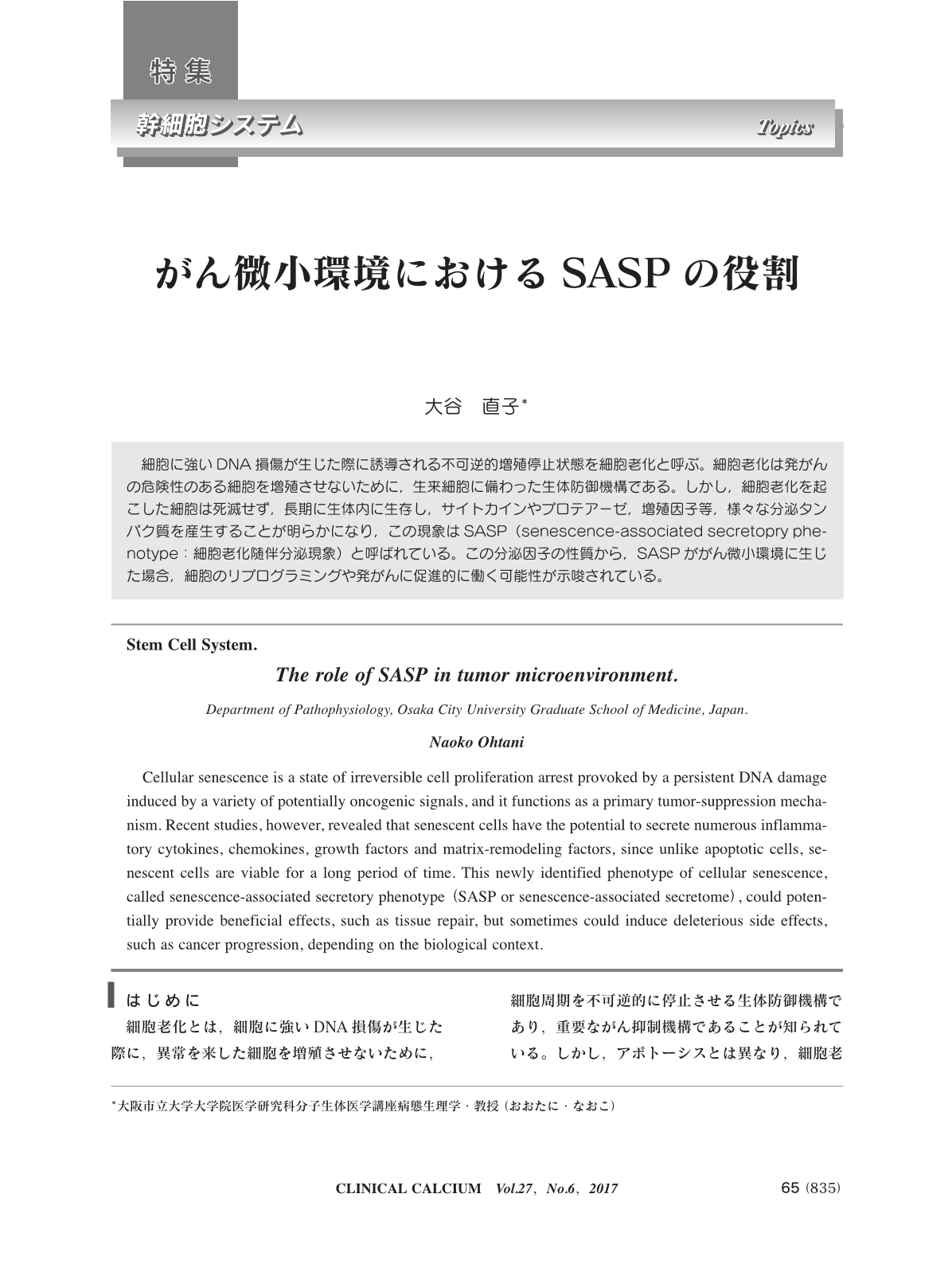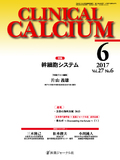Japanese
English
- 有料閲覧
- Abstract 文献概要
- 1ページ目 Look Inside
- 参考文献 Reference
細胞に強いDNA損傷が生じた際に誘導される不可逆的増殖停止状態を細胞老化と呼ぶ。細胞老化は発がんの危険性のある細胞を増殖させないために,生来細胞に備わった生体防御機構である。しかし,細胞老化を起こした細胞は死滅せず,長期に生体内に生存し,サイトカインやプロテアーゼ,増殖因子等,様々な分泌タンパク質を産生することが明らかになり,この現象はSASP(senescence-associated secretopry phenotype:細胞老化随伴分泌現象)と呼ばれている。この分泌因子の性質から,SASPががん微小環境に生じた場合,細胞のリプログラミングや発がんに促進的に働く可能性が示唆されている。
Cellular senescence is a state of irreversible cell proliferation arrest provoked by a persistent DNA damage induced by a variety of potentially oncogenic signals, and it functions as a primary tumor-suppression mechanism. Recent studies, however, revealed that senescent cells have the potential to secrete numerous inflammatory cytokines, chemokines, growth factors and matrix-remodeling factors, since unlike apoptotic cells, senescent cells are viable for a long period of time. This newly identified phenotype of cellular senescence, called senescence-associated secretory phenotype(SASP or senescence-associated secretome), could potentially provide beneficial effects, such as tissue repair, but sometimes could induce deleterious side effects, such as cancer progression, depending on the biological context.



